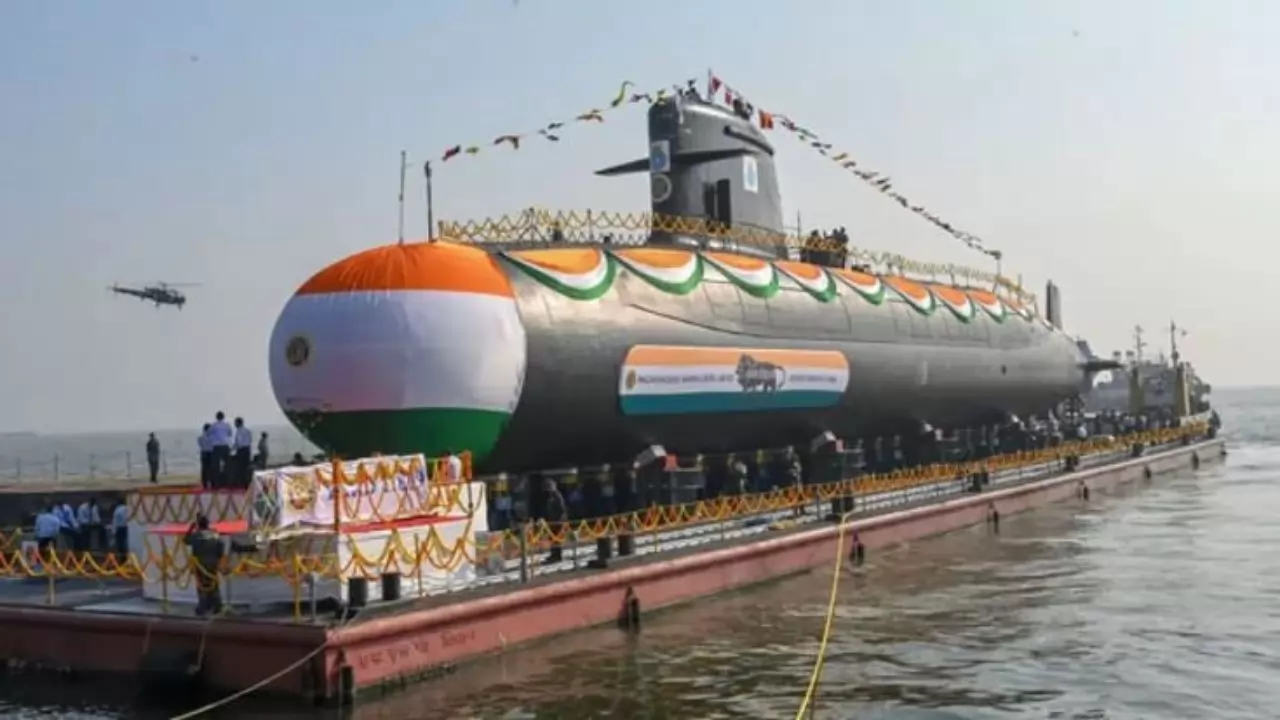
India’s second nuclear missile submarine (X(Representative Image))
Defence Minister Rajnath Singh is poised to commission India's second nuclear-powered ballistic missile submarine (SSBN), INS Arighat, at a low-key ceremony in Visakhapatnam on Thursday. The event, attended by Chief of Naval Staff Admiral Dinesh Tripathi, Vice Admiral Suraj Berry, head of Indian Strategic Command, and senior officials from the Defence Research and Development Organisation (DRDO), marks a significant milestone in India's naval capabilities. The submarine will operate under India's strategic command, further solidifying the nation's nuclear deterrence.
Though the Ministry of Defence has maintained a veil of secrecy over the classified project, sources confirm that the 6,000-tonne INS Arighat is ready for deployment. The submarine, armed with K-15 nuclear ballistic missiles with a range of 750 km, is set to undertake extended patrols in the Indo-Pacific region. This addition to India's naval fleet follows the commissioning of its first SSBN, INS Arihant, and precedes the upcoming launch of two more SSBNs: INS Aridaman (S4) next year, and another, codenamed S-4*, shortly thereafter.
With the commissioning of INS Arighat, India now has two operational SSBNs, a critical component of the country’s nuclear triad and second-strike capability, reflecting India's no-first-use nuclear policy. Positioned strategically in the Indo-Pacific, these submarines serve as a powerful deterrent to any naval aggression, underscoring India's growing influence and defensive posture in the region.
Both submarines are powered by indigenous nuclear reactors and equipped with homegrown nuclear missiles, representing the pinnacle of India's technological advancements in submarine warfare. While INS Arihant was primarily a technology demonstrator, INS Arighat is a refined and more advanced vessel, addressing all previous technological challenges.
As India strengthens its undersea warfare capabilities, the Indian Navy is awaiting government approval for the construction of two additional nuclear-powered conventionally armed submarines (SSNs). Unlike diesel-electric submarines (SSKs), which must surface frequently to recharge batteries, SSBNs and SSNs can remain submerged for extended periods, limited only by logistical needs, supplies, and crew rotations.
The next class of submarines, slated for launch after the commissioning of S-4*, will be larger, capable of carrying nuclear ballistic missiles with a range of 3,000 km, and feature additional missile tubes, further enhancing India's strategic deterrent.
In addition to INS Arighat, the Indian Navy is set to bolster its fleet with the upcoming commissioning of several new vessels. These include the guided missile stealth destroyer INS Surat, the stealth guided missile frigate INS Taragiri, and the sixth Kalvari-class attack submarine, INS Vagsheer, all expected to join the fleet within the next six months. Moreover, the Navy plans to place orders for three more Kalvari-class submarines with Mazagon Dock Shipbuilders Ltd in Mumbai later this year.
These developments mark a significant leap in India’s maritime strength, enhancing its ability to project power and maintain security across the Indo-Pacific region.





Copyright © 2025 Top Indian News
